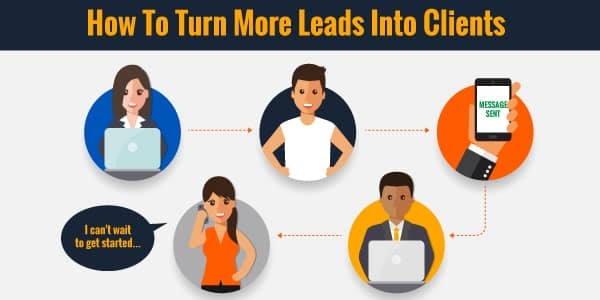Lead follow up is something every salesperson needs to do, but it’s not always a straightforward process. Here’s an insight into the different types of follow up and how you can do it properly.

A lead follow up is a type of marketing campaign that helps you generate leads and convert them into customers. It is a systematic process that involves following up with your leads and nurturing them until they become customers.
There are several benefits of lead follow up, including:
• Increased conversion rates.
• More qualified leads.
• Increased customer retention rates.
• Increased conversion rates as leads are contacted and engaged with;
• Improved visibility of your brand and company as you continue to provide valuable content and information to your leads;
• More qualified leads that are more likely to buy from you;
• Increased ROI as you generate more sales from your leads.
There are a few things that you can do to follow up leads effectively:
1. Send a follow-up email after your initial contact.
2. Call the lead and set up a time for a call.
3. Attend an event or meet-and-greet that is related to your product or service.
4. Send gifts or samples to the lead as a way of extending an invitation to purchase.
5. Do a survey or interview with the person.

You can effectively target your lead generation activities to different people depending on their stage in the sales process, characteristics and buying habits. These are some of those groups:
• Pre-qualified Targeted
You will customise your lead list based on specific information from buyers' data warehouse that is considered predictive – such as by asking for certain criteria related to their roles and demographics.
• Contacted Targeted
Here, you will target people that have contacted you but haven't yet qualified for a new sales agent or account manager appointment.
• Qualified Mentioned (via email or phone call) Target Independent Campaigns
You can also use the advanced search option in Google My Business to see which leads are already being tracked by your business as potential customers so taking any further action may not be relevant.
There is no one answer to this question as it depends on the lead source and the type of lead. However, generally speaking, you should follow up with leads within a few days after you have contacted them.
This will help you gauge whether or not they are interested in your product or service and ensure that you are providing the best possible experience. If you have made contact outside of your 4-week rule, it's generally best to follow up 24 hours after the original conversation, although this again varies depending on lead source and business incentive.
Many companies believe that following up too soon could hurt more than help chances at conversion by spurring negative emotions in a prospect based on perceived irritation or frustration.
If they feel good about their decision and value relationship with your company then no bad feelings will occur but if they feel ignored or receive no contact after 2-3 business days then it may be to their benefit to change course.

1. Send out a thank you email after a sale is completed.
2. Send out a follow-up email to customers who haven't replied to your emails in a while.
3. Offer a discount or free product to customers who refer someone else to your business.
4. Send out another email asking customers if they have any questions about your product or service.
5. Send a follow-up email after they've received the product to ask for feedback and tell them how you're using it in your business.
This is an important email that you should send to your customer after they have purchased your product or service. It can help seal the deal and make sure that they are happy with their purchase.
- Make it personal: Use language that is friendly and easy to understand.
- Thank them for their business: Thank them for trusting you with their purchase and letting them know how you will use their information to improve your products or services in the future.
- Ask if there are any questions: If there are any questions about the product or service, be sure to include information on how to contact you so that they can get clarification.
- Stay connected: Let them know that you would love to continue building a relationship with them and keep them updated on what's going on in your business.
We've all been there. You're in the middle of a sales call and you just lost your momentum. You feel like you're going around in circles, but what can you do to get back on track? There are some great ideas out there that will help get your message across and get things moving again. Let us know in the comments below if you want to know more.